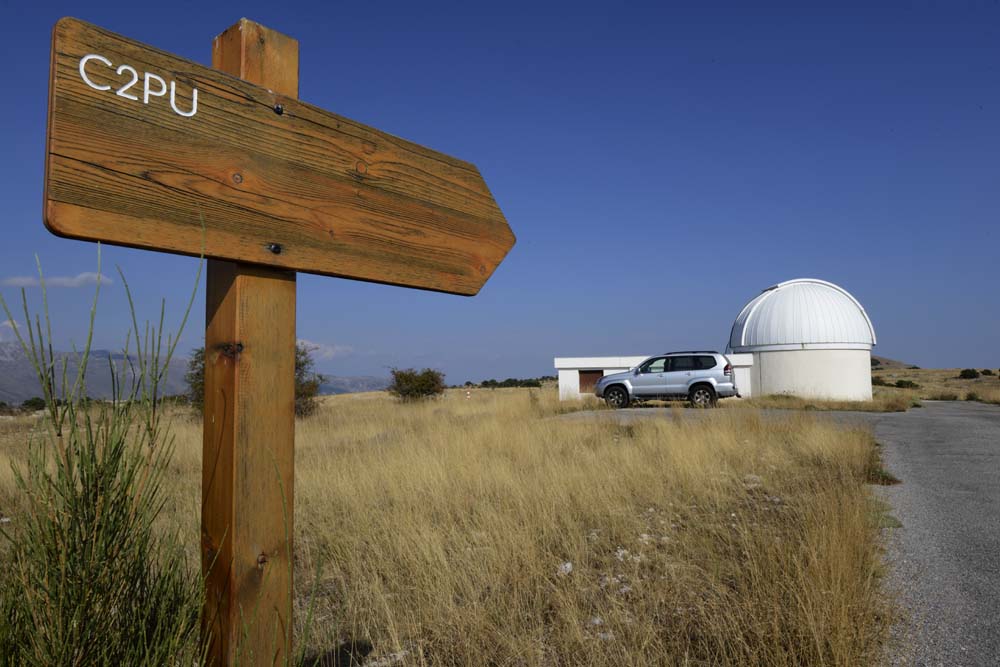
The C2PU building on the Calern plateau (Photo : Olivier Garde)
The uvex is attached to the telescope at f / 9 and we use an ASI 183 MM pro camera, a 35µm slit and a 600 gr/mm grating blazed at 500nm.

Olivier and Christian during the UVEX setting (Photo : Pierre Dubreuil).
The 1st spectrum was made on the andromede parachute, a gravitational lens with a redshift Z = 2.33 approximately (11 billion light years) and the magnitude of this target is around 15-16.
The seeing during exposure was very good, around 1" RMS and pics around 0.6'', but we haven't use any auto guiding system, so the accuracy is about 1.5'' .

Here's the slit during exposure, we can see the 35µm slit and the 3 components of the gravitational lens (not a single dot).
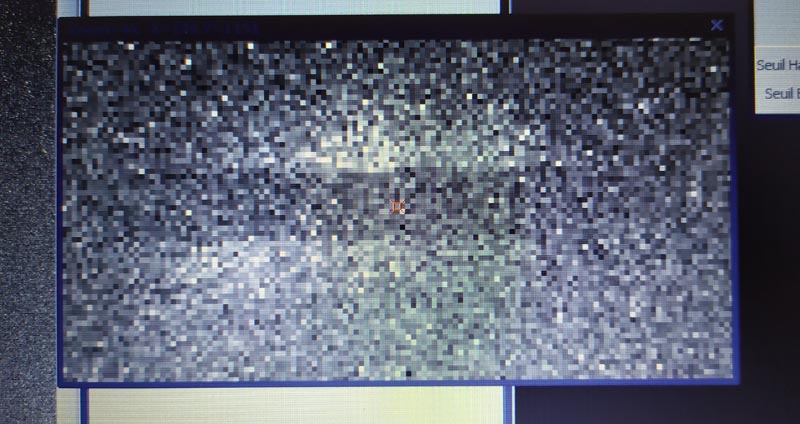
(Photo : Pascal Le Dû)
Here's the spectrum with a resolution around R=2000. (5 exposures of 900s)
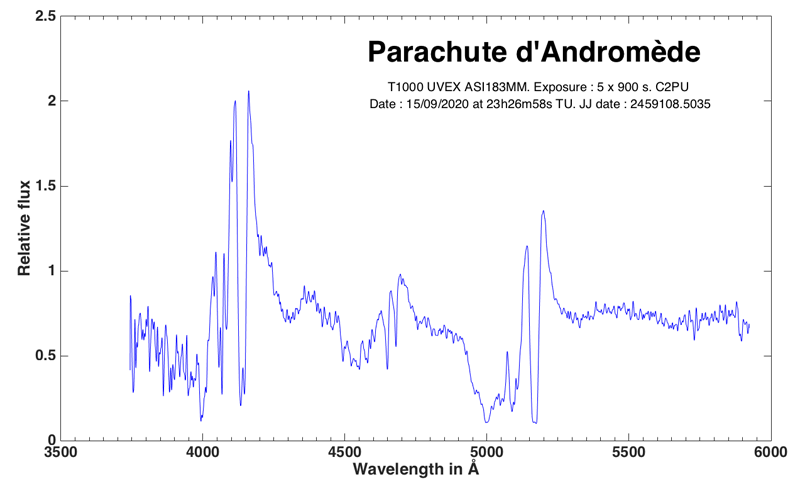
Process made by Christian with ISIS V6 (CMOS process)
And a comparison with a spectrum taken on the KECK (10 m diameter telescope) in 2017
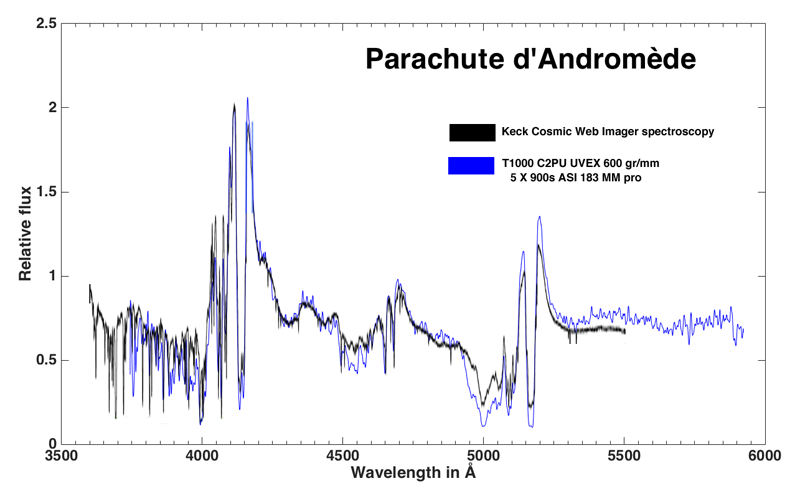
Our spectrum is quite good with maybe a better resolution. Also note the evolution of the spectrum over 3 years.
Another target : Z And (symbiotic star Mag. V=8,08)
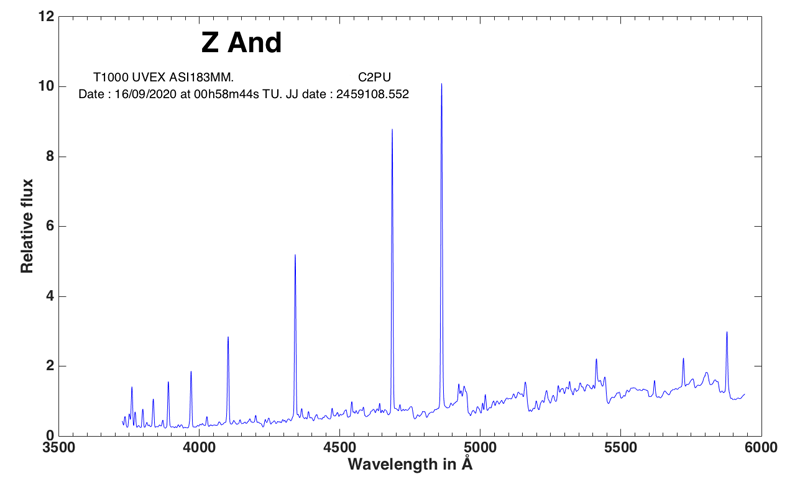
We took 3 exposures: 900s, 600s and 300S because we were surprised by the saturation of the spectrum at 900 and 600s. Same process by Christian with ISIS V6
In conclusion, the UVEX has been tested here on a telescope which is a little outside the standards compared to its basic optical design, namely a Ritchey Chretien type telescope of 12, see 14 inches at F / d 8, not a one meter telescope... But on point targets, we were able to show that we could use this spectrograph on a one meter telescope and produce good results spectra.
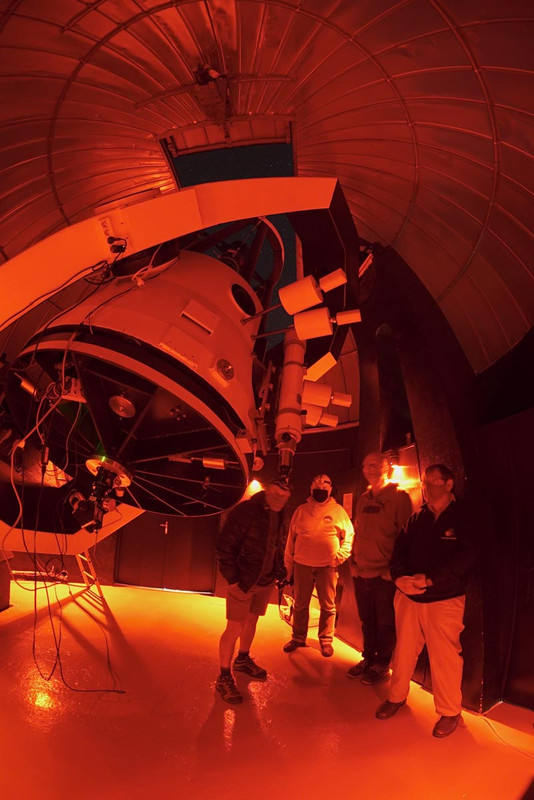
The team around the one meter telescope with (from left to right) Pascal Le Dû, Olivier Garde, Pierre Dubreuil and Christian Buil (Photo : Pascal Le Dû)
